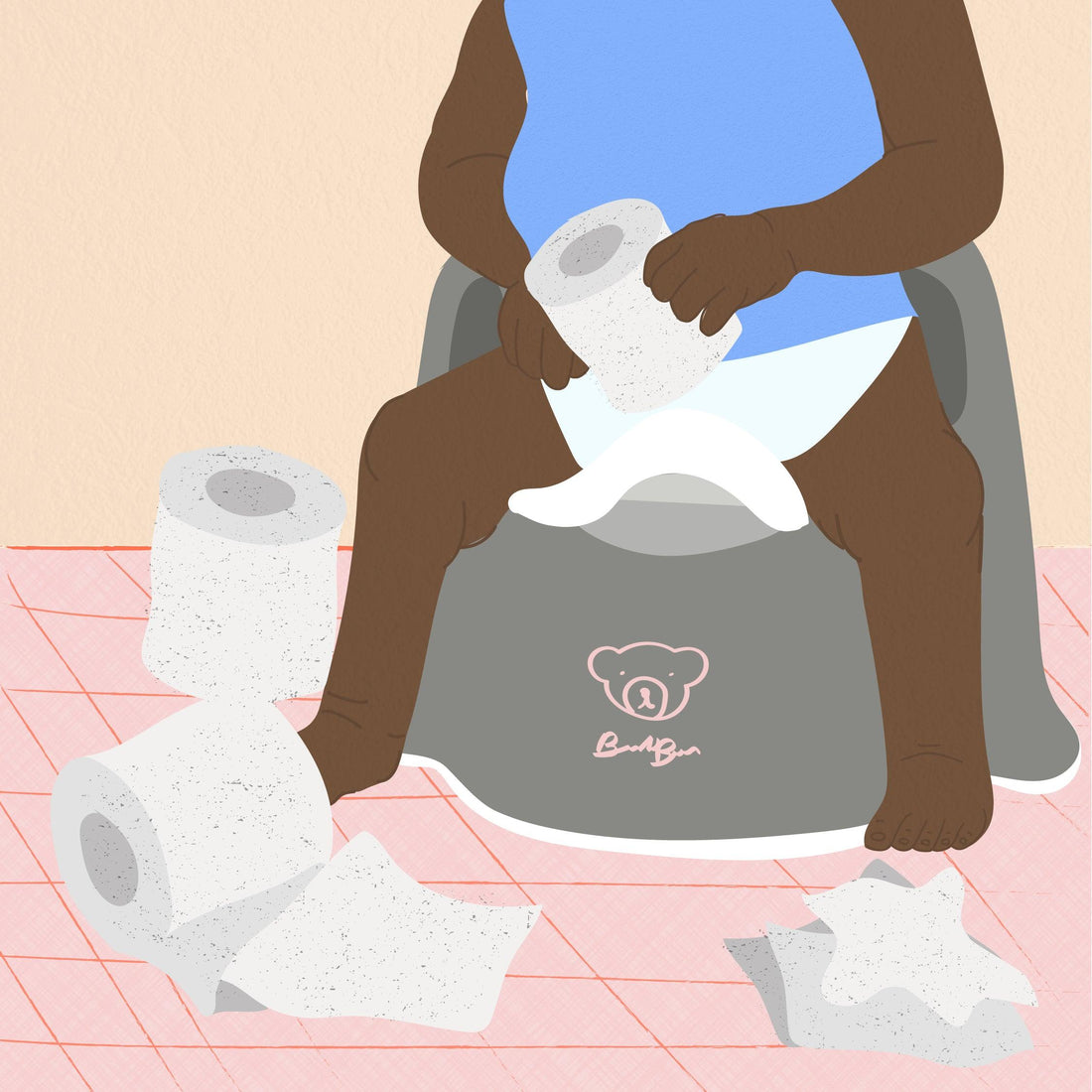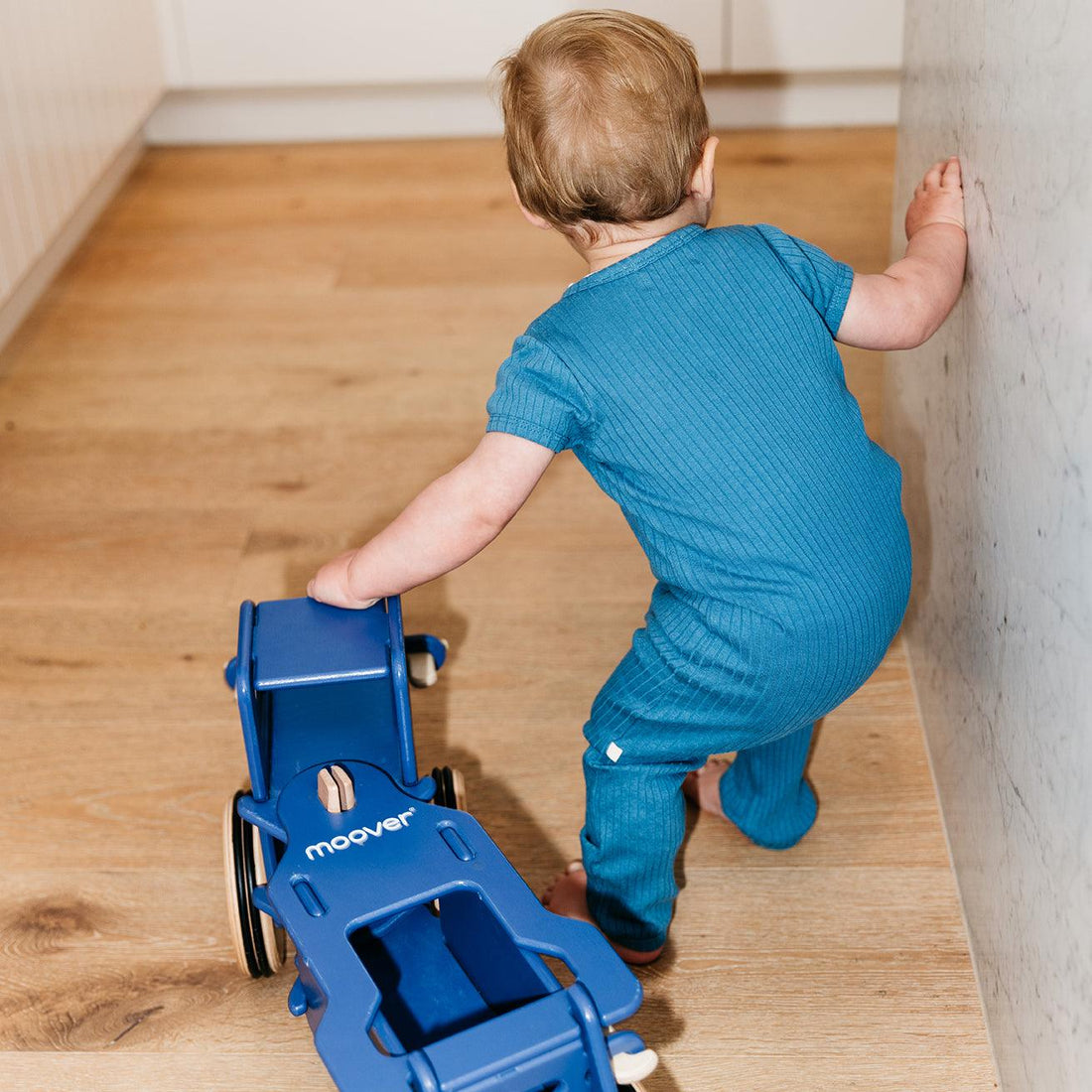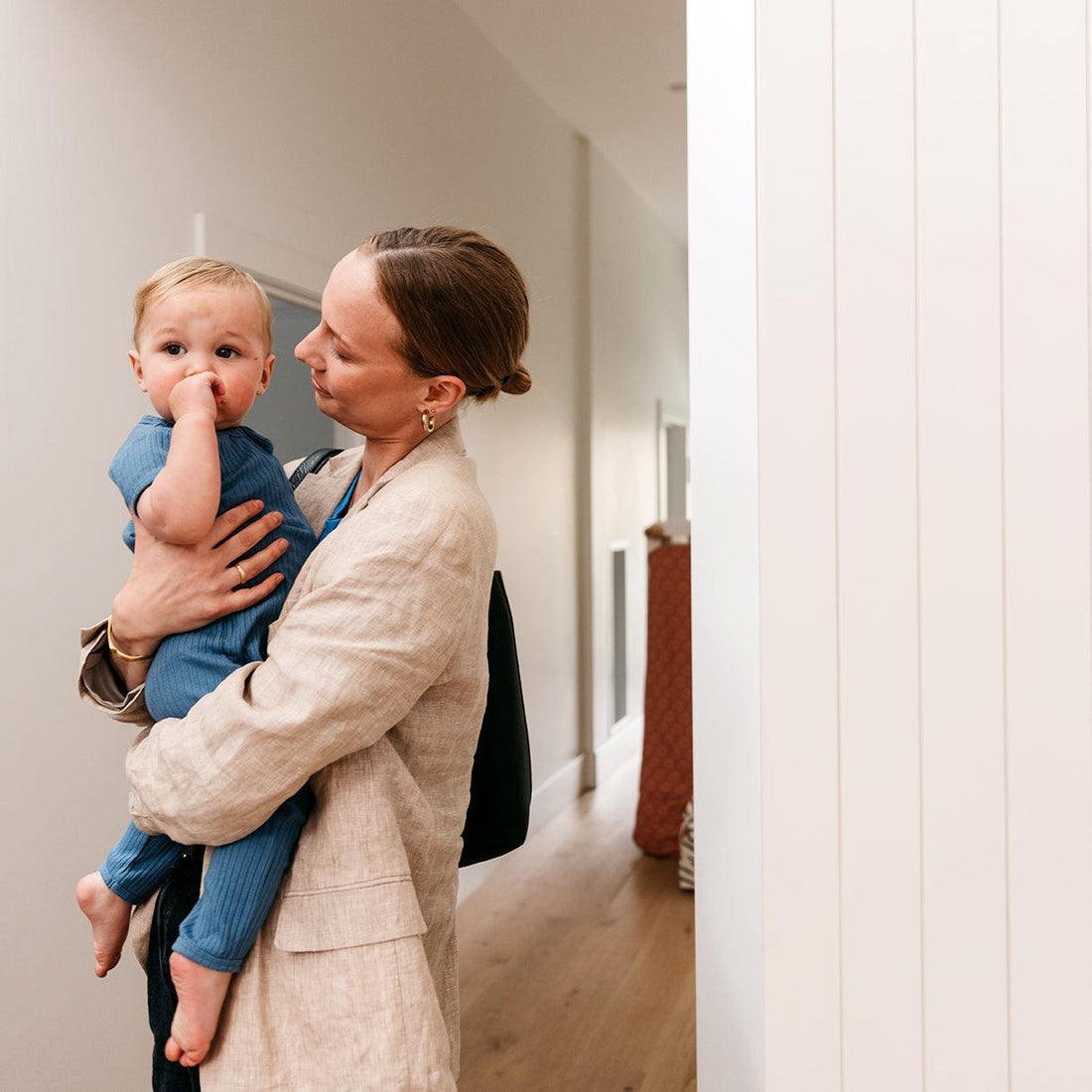Pun intended.
My mum is convinced I was entirely toilet trained, days and nights, by my second birthday. “I was done with nappies, so I made sure of it. You had it nailed in a week,” she started recounting when my son began showing interest in the toilet at about 20 months. To me, it seemed very young. Our son was in a stage of mimicking everything we did, but that did that mean he fully understood the function of the toilet or what he was meant to do on it? He played with the pots and pans too, but that didn’t mean he knew how to cook dinner.
Toilet train can be a source of a lot of parental stress. Should you leap on those first signs? Wait until you can really talk about it with them? What if doing it early leads to lots of accidents? What if waiting means they’re the last one in their childcare room still in nappies?
My mum isn’t the only one regaling tales of expertly toilet-going toddlers. That generation, now the grandparents, did, generally, toilet train their children (us) earlier. A survey from Emily Oster’s Cribsheet found the average age of toilet training, for children born before 1990, was 30 months, while now, more recently, for children born after 2009, it’s 32 months. Further, the portion of children toilet trained at 36 months (which is three years) was about 25 percent in the earlier birth bracket, while for the latter, it’s more like 40 percent. Another US study reports that in the 1940s, the average age for potty training was 18 months, but averages today show baby boys give up nappies at 39 months and girls at 35 months. The average age for toilet training is definitely rising, for a few, quite good, reasons. The first is that obviously, the nappy game has changed. For our parents, disposable nappies were very expensive and not very effective. Many parents, including my own, used cloth nappies, with the kind of safety pins you only see now in illustrations on baby shower invites. For bed, my mum used to double the nappies, essentially, two towels, and pull up big plastic pilchers to wear over the top and keep it all together. Imagine having to change that at 3am? They also used a nappy cleaning service, which I don’t really want to think about for too long. Modern age cloth nappies are so much more advanced and easy to use, even if you’re choosing that route, it’s a whole lot better now than in the ‘80s. So, nappies are simpler, less time consuming and cheaper, so as parents, we’re less insistent on moving on from them.
Other than nappy quality, there is that fact that parenting is a lot more about emotions than milestones now. Experts talk more about the benefits to ensuring children are emotionally as well as physically ready before toilet training happens.
Finally, there's the good old herd mentality. Most child care centres focus on toilet training at around three. Indeed, some centres insist, as that’s the time children move to a new room, where nappy changes don’t happen. "Which is a highly practical reason," says paediatric psychologist Amanda Abel, co-creator of Toddler Toolkit a new toddler parenting course, "but doesn’t make it any easier for a parent whose child isn’t developmentally ready to independently use the toilet yet." With this "around three" guideline becoming the norm, parents are more likely to work towards that, rather than do it earlier.
From the research available (which is pretty limited), it can be concluded that the only real benefit of toilet training earlier, is that you have to change less nappies in totality. Toilet training can take days, weeks or months, but generally, doing it later, when your child is old, takes less time. Whether long or short, the time spent toilet training can be an anxious one, with high highs — the first toilet poo — and low lows — cleaning wee off the rug for the third time that day. Ahead, is everything I wish I knew, before I was in it with my own son.
Potty or toilet seat
It’s what works for you and your kid. I bought both but my son could only see the potty as a toy/hat, so we were more successful with a toilet seat and step. It’s really important that the step is tall enough so that your toddler can be seated on the toilet with their feet flat on the step. This ensures the correct posture and aids the whole going to the toilet process. Some recommend going straight to the toilet seat over the potty because it eliminates another transition step (from potty to toilet), plus, unless you’re going to take it everywhere with you (and many do), the potty isn’t an option when you’re out and about. On the other hand, it’s easier to make potty fun. You can move it to wherever your kid feels more comfortable, they can easily access toys on the floor while they are sat on the potty and hence, may sit there longer, plus, it’s safer than having them high up on the toilet, particularly for younger trainees.
Make it fun
There’s two parts to this, first, to have special toys or games that are only played with during potty time. The second, is to let go of expectations and pressures. We’re all just having fun. A big part of this for my son was staying with him in the toilet. In the beginning, I thought I could pop him on the toilet and quickly clean the kitchen. Not so. And probably not safe. When he was on the toilet, he wanted to chat. About his poo, about his willy, about why I didn’t have one, about his last unsuccessful toilet poo, “I had an accident, it happens,” about a carrot that made him very sick. Sometimes he wanted to sing, or would ask me to sing to him. These chats were what he liked about going to the toilet, so we made it a consistent part of it. Even when we were in the toilet at the supermarket.
They have to want it
Pressuring children to achieve potty training isn’t constructive and rarely successful. Two-year-olds are working to express their autonomy. Engaging in power struggles with them is pointless and frustrating for both of you. Even if you feel they’re ready, if they don’t want to try, it’s not going to happen. If you have a reluctant toilet-trainee, keep offering, keep talking about it but don’t force it, and when they give and take a step closer, even just sitting on the toilet, go big on the praise. It’s only going to happen when they want it to.
Poos are different to wees
It is entirely possible, almost likely, that a child can be fully potty trained for wees, but only poo in their nappy. The first thing to know is that they are, physically, totally different. Weeing is about releasing, while pooing is pushing. Wees are quite regular, poos can be affected by diet and there is research that suggests children who experience regular constipation take longer to toilet train.
Night is different to day
"A child can’t be trained overnight to stay dry. It’s very normal for children who are daytime toilet trained from an early age, to continue wetting the bed overnight, until 6 or 7 years of age," says Amanda Abel. Ensuring a toilet trip before bed and any time they wake up are the starting points for overnight success.
Look for “potty-tunities”
Do your time on the toilet when they are likely to go: after meals, before naps or whenever they usually go. My son had a fairly reliable routine in nappies but I found it went out the window once he was using the toilet. After being successful with wees for a few weeks, I was determined to get a toilet poo under our belts. Until this time, he would sneak off upstairs to do his poo in his bedroom (in his nappy). On this particular Wednesday, I cancelled any afternoon plans, and was watching him like a hawk. Every half hour I asked him if he wanted the toilet, sometimes he’d say yes, sometimes he’d wee, but I knew he’d need to do a number two, it was only a matter of time. Finally, he said to me, “mummy I need the toilet!” quite desperately, I got him on the seat and he instantly went. The first toilet poo was done. I made a big fuss of him, gave him his treat, and it was the beginning of the corner turn.
Speeding things up for daycare
"My general advice is to wait until your child is ready, but in the case of kinder commencing, and you won't be able to send them if they're still in nappies, it becomes very important. "If your speeding up the process, work on the pre-requisite skills in the three months prior. I have lots of tips for this in my Toddler Toolkit, but I would avoid the 48-hour, don't-leave-the-house intensive style."
Keep your cool with the fails
This is a safe space so I’ll be honest, I was pretty annoyed when we’d been calmly visiting the toilet (a billion times) only to have him sneak off and poo his pants or pee on the carpet. But I never showed it. It was always, “Oh that’s OK. Thankyou for telling me, let's get you cleaned up and next time, maybe we can try using the toilet.” I purposely stayed away from language or reactions that might cause shame. Amanda Abel says staying calm is most important. "Regulating our own emotions and reactions is most of the job. Your toddler didn’t mean to poo in their jocks on the way home, they're still learning. When it comes to accidents remember: They are a great part of the learning process - feeling wet and uncomfortable reminds toddlers of the benefits of using the toilet. Don't give attention to the accidents as this can inadvertently reward it, be neutral (don’t apply punishments) and quickly clean up, before moving on to something else. Oh, and always have spare clothes when you’re out and about."
It doesn’t have to be all or nothing
You hear a lot about the lockdown weekend, where parents spend the weekend at home with their toilet trainee getting it sorted in one bang. Certainly, it can work for some, particularly if you’ve been at it for a while and need a final push, but toilet training doesn’t have to be all or nothing. You can start, stop, start again later, do the toilet when you’re home and nappies when you’re out. The latest insights from experts say whatever works for you is OK, as long as you’re building on a fun, pressure-free habit, do it how you want. It won’t confuse your little one, or set them back.
Treats work
I was a non-parent who said they’d never bribe my own child. Oh the arrogance of the uninitiated. In fairness, my son hasn’t really taken to the “do X, and you’ll get Y” deals, either arguing that he just wants Y now, or flat out saying he doesn’t want X, however when it came to toilet training, treats worked. Whether it’s stickers or smarties that floats your kid’s boat, the treats create a positive association with going to the toilet, which, when you’re in those early stages, is a huge win particularly if you’re kid expresses fear or dislike of toilet time.
Just when you think you’ve nailed it…
There will be regressions. My son had been accident-free for two weeks, and then it was like he’d forgotten everything. He was coming home from daycare with bags of wet clothes and I was back to cleaning wee out of the carpet. Incredibly frustrating? You bet, but we stuck with it — just with extra extra clothes — and came out the other side.



























